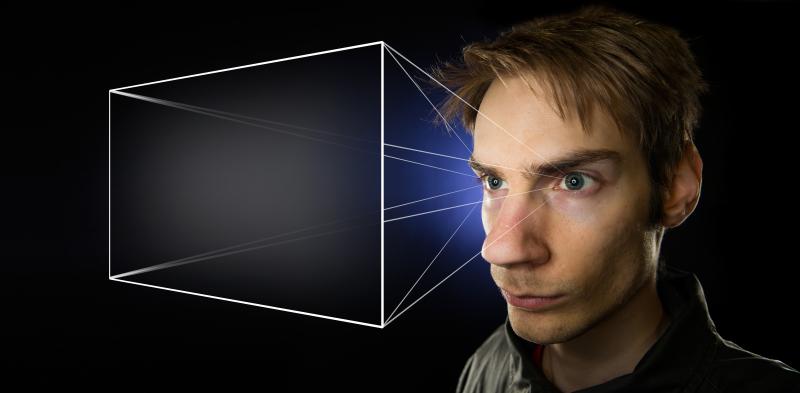Is the Universe a Hologram?
Romans 1:21
Because that, when they knew God, they glorified him not as God, neither were thankful; but became vain in their imaginations, and their foolish heart was darkened.
Many astrophysicists have speculated that the universe is like a four dimensional sphere. If we imagine that we were ants, living on the surface of a very large beach ball, we might think that the surface on which we stood was a flat surface, even though it stretches around and back on itself in a sphere through the third dimension. In the same way, astrophysicists surmise that our impression of  a 3D universe is just that; it is really stretched back on itself, through a 4th physical dimension (this 4th dimension being physical, not like the 4th dimension of time proposed by Einstein). Why do scientists imagine such a complex scenario, without any real evidence for it? It is because certain measurements give every indication that our galaxy is near the center of the universe, but this is philosophically uncomfortable for secularists. The 4D sphere enables them to imagine that every point in the universe is central, so nowhere is special.
a 3D universe is just that; it is really stretched back on itself, through a 4th physical dimension (this 4th dimension being physical, not like the 4th dimension of time proposed by Einstein). Why do scientists imagine such a complex scenario, without any real evidence for it? It is because certain measurements give every indication that our galaxy is near the center of the universe, but this is philosophically uncomfortable for secularists. The 4D sphere enables them to imagine that every point in the universe is central, so nowhere is special.
Difficulties with this model are legion, so, recently, a team of astrophysicists at the University of Southampton, England, have supposed that the universe is like a 4D hologram. Holograms that we see on some credit cards look as if they are 3D, but actually the information is encoded in 2D. In a similar manner, the Southampton scientists imagine a sort of 4D encoding, which is really in 3D.
As we have often noted, these complex scenarios are necessary only because secular scientists cannot imagine that God has special purposes for the planet that we live on, and for the human race, of which we are a part.
Prayer:
Help us to remember, O God, that Yours is the Kingdom, the Power and the Glory forever. Amen.
Notes:
University of Southampton. (2017, January 30). Substantial evidence of holographic universe. ScienceDaily. Retrieved February 22, 2017 from www.sciencedaily.com/releases/2017/01/170130083231.htm
Image: Adobe Stock Photos, licensed to author